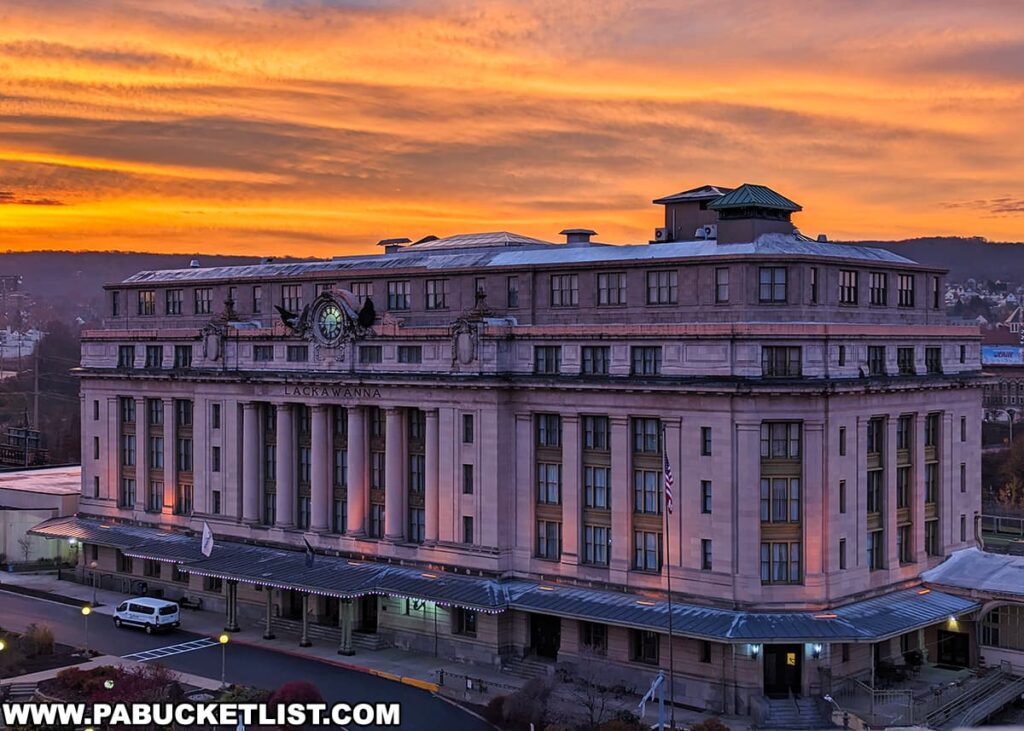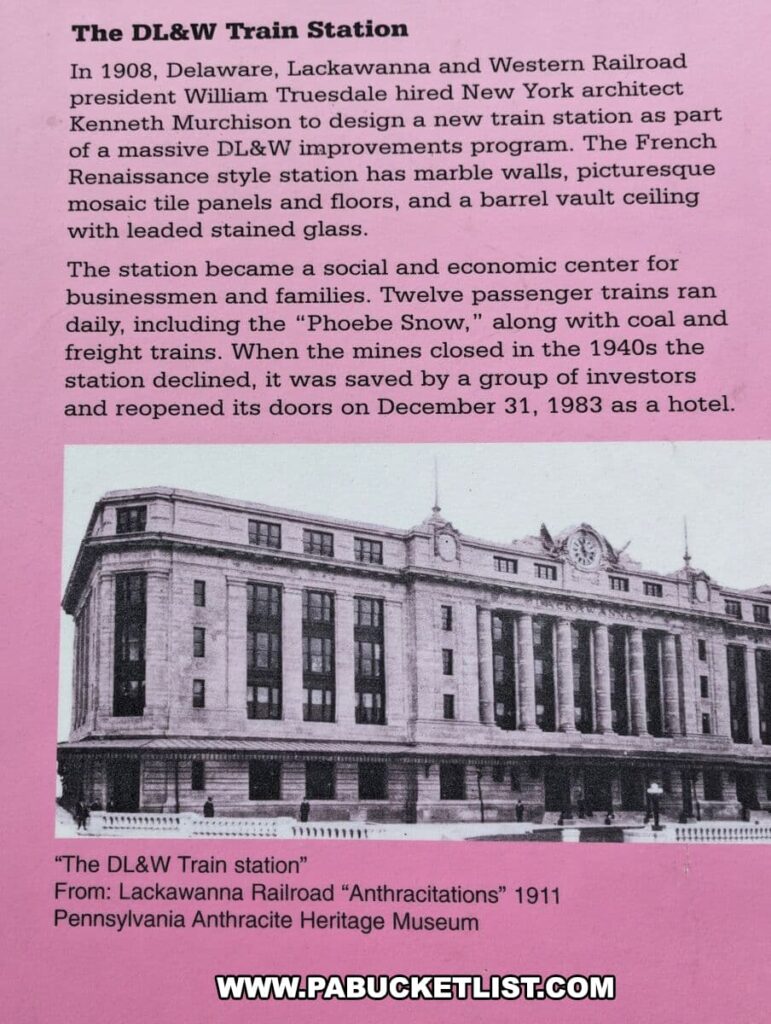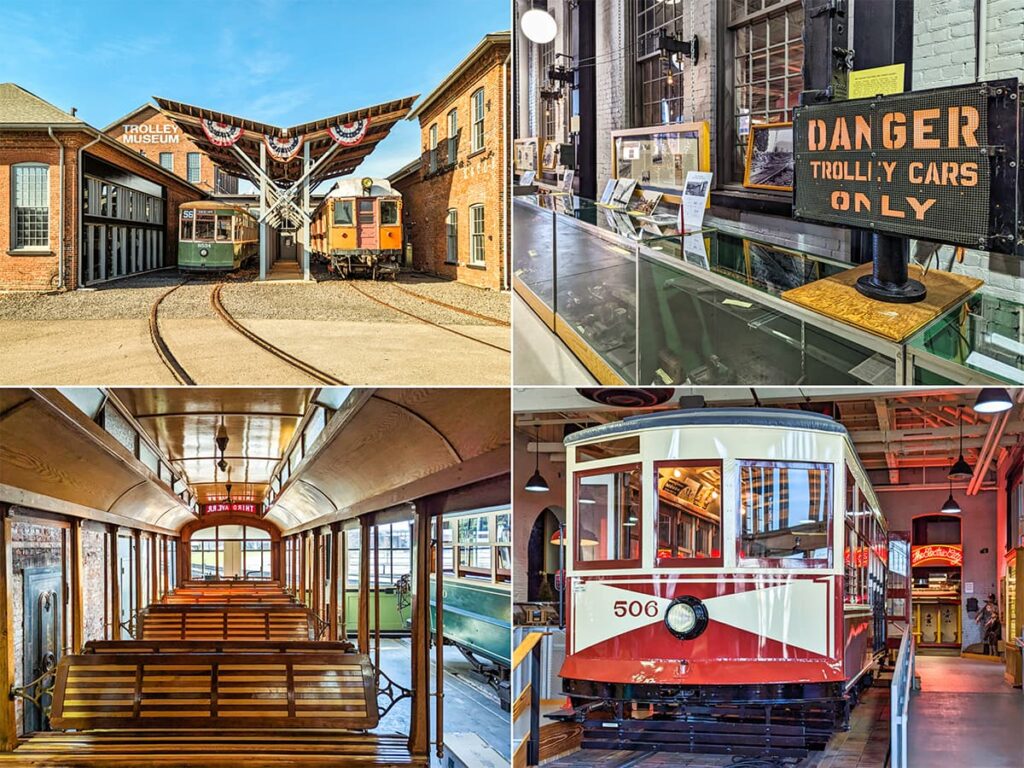
If you’re looking for information about visiting the Scranton Iron Furnaces historic site in Lackawanna County, you’re in the right place!

The Scranton Iron Furnaces stand as a monumental emblem of the city’s industrial past, dating back to the 19th and early 20th centuries, when Scranton was a thriving center of iron production.

Directions | Hours | Fees
The Scranton Iron Furnaces historic site is located at 159 Cedar Ave, Scranton, PA 18505.
The site is open year-round, from sunrise to sunset.

There is no fee to visit the Scranton Iron Furnaces.

Historical Significance of the Furnaces
The Scranton Iron Furnaces, constructed from 1848 to 1857, were integral to the operations of the Lackawanna Iron and Coal Company.

This company was a major player in the iron industry of Northeast Pennsylvania, significantly influencing the region’s economic development.

The furnaces represented a period of rapid technological progress in iron production, contributing to the growth of the railroad industry and the wider economic boom of the era.

These furnaces were not just industrial facilities; they were symbols of innovation and the American spirit of progress.

At their peak, they exemplified the latest advancements in ironmaking technology, including the use of anthracite coal.

Their production capacity helped fuel the demands of a growing nation, especially during critical periods like the Civil War, where their iron was instrumental in the manufacturing of armaments and machinery.

The Site Today
Presently, the remnants of these colossal structures offer a striking glimpse into an era of formidable industrial power.

The site is marked by four towering blast furnaces, each standing about 40 feet high, representing the once-mighty industrial complex that dominated this area.

These furnaces, though now silent, speak volumes about the scale and intensity of the iron-making processes of their time.

The surrounding area has been carefully curated to enhance visitors’ understanding, with numerous informational displays that describe the operation of the furnaces and the daily lives of the workers who operated them.

The Railroad Connection
Just a stone’s throw away from the furnaces lies the historic DL&W (Delaware, Lackawanna & Western) train station, another significant piece of Scranton’s industrial heritage.

The rise of the railroad in Scranton paralleled the growth of the iron furnaces.

As the furnaces thrived, producing massive quantities of iron, the DL&W railroad emerged as a critical conduit, transporting these materials across the nation.

This symbiotic relationship between the iron industry and the railroad was a key driver in Scranton’s economic ascent, turning the city into a pivotal industrial center in the Northeast United States.

Today, the beautifully preserved train station-turned-hotel serves as a reminder of the era when iron and rail were the lifeblood of Scranton’s economy.

Final Thoughts
The Scranton Iron Furnaces stand as a testament to a pivotal era in American history.

It’s an exploration of an era where industrial might and innovation were key drivers of American progress.

For those interested in the industrial revolution, technological evolution, or the socio-economic transformations of the past, this site offers an unparalleled glimpse into a world that once was.

Nearby Attractions
The Anthracite Heritage Museum in Scranton preserves the history of the anthracite coal mining industry in northeastern PA, including the cultural legacy of the European immigrants who toiled to extract the region’s “black diamonds.”

The Lackawanna Coal Mine Tour, adjacent to the Anthracite Heritage Museum, offers a rare glimpse into the life of an underground coal miner by taking visitors deep below ground into an actual anthracite coal mine.

Steamtown National Historic Site is both a museum and an active railyard, located on the site of the former Scranton yards of the Delaware, Lackawanna and Western Railroad (DL&W).

The Electric City Trolley Museum in Scranton offers a captivating journey into the heart of the city’s once-vibrant streetcar network.

The Electric City Aquarium and Reptile Den in Scranton is a must-see for lovers of all things aquatic and reptilian.

The Everhart Museum is a natural history, science, and art museum founded in 1908 by Dr. Isaiah Fawkes Everhart, a prominent Scranton physician and passionate naturalist.

Did you enjoy this article?
If so, be sure to like and follow PA Bucket List on Facebook, Instagram, and/or Pinterest to learn more about the best things to see and do in Pennsylvania!
Click on any of the icons below to get connected to PA Bucket List on social media.


